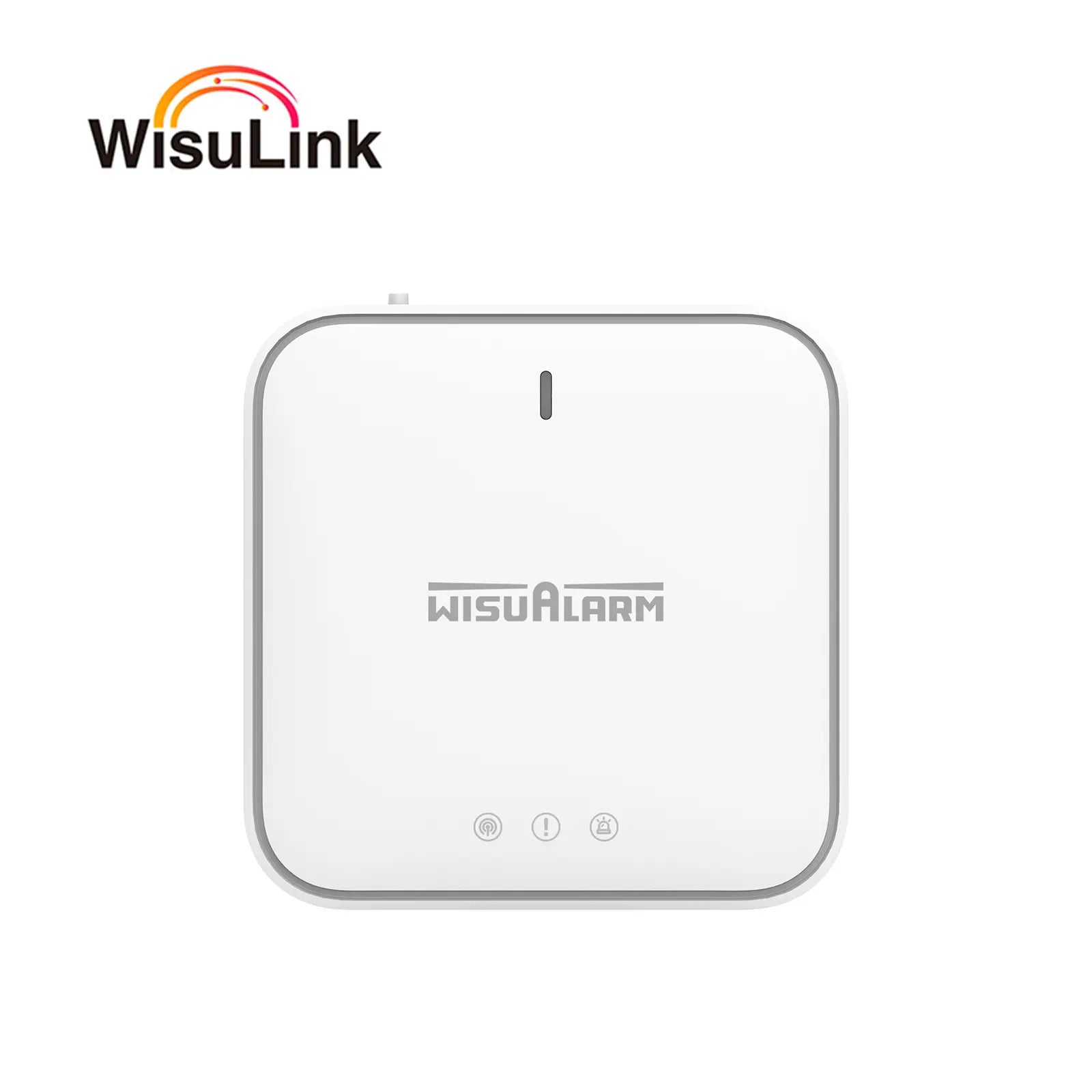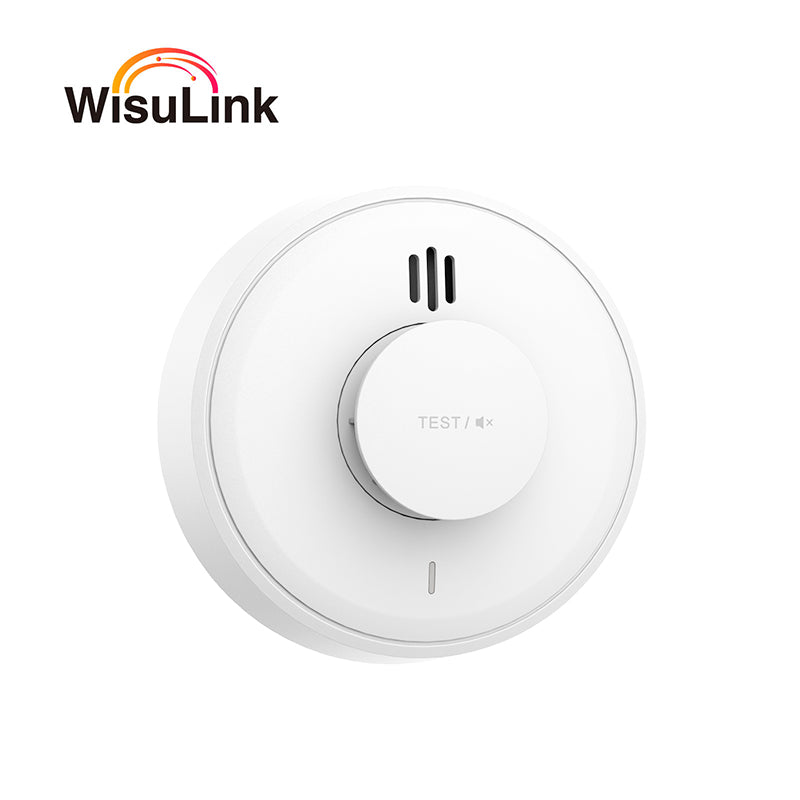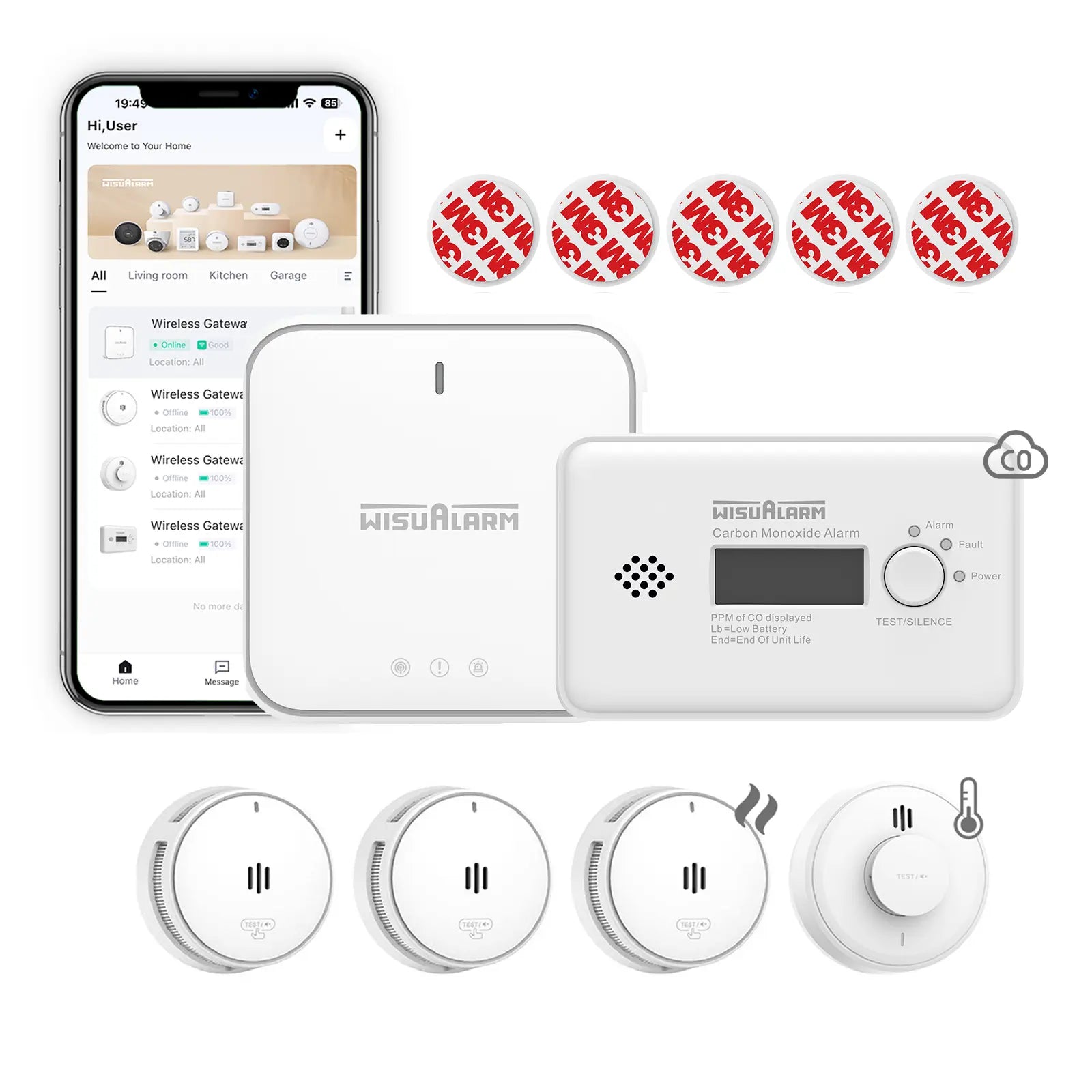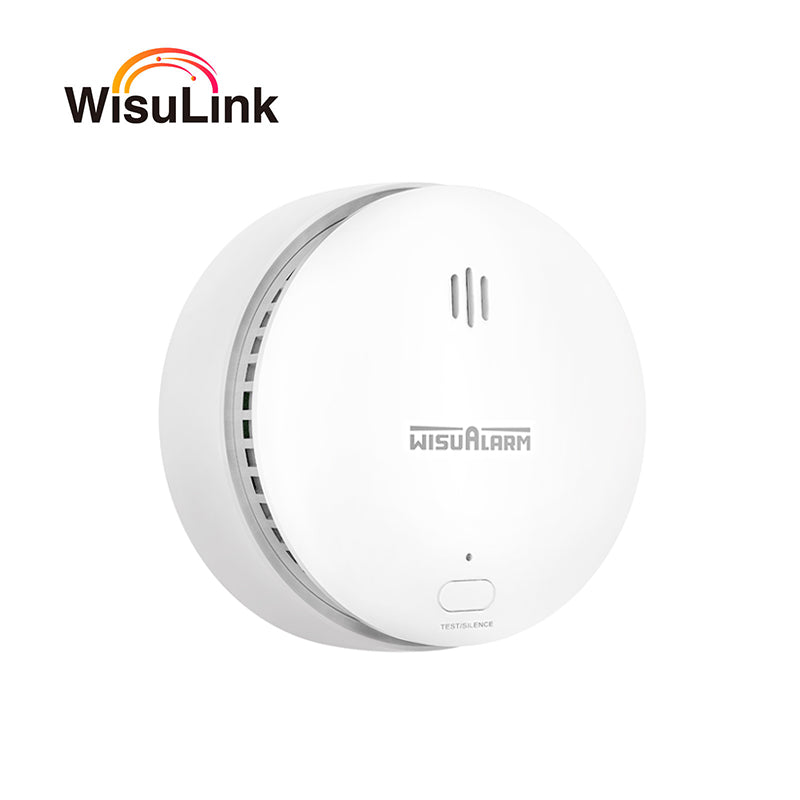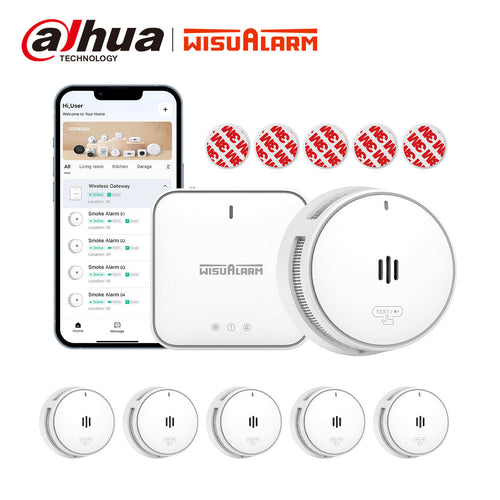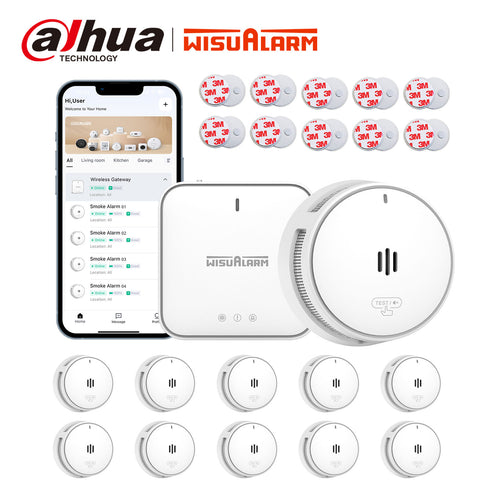A smoke detector is the first line of defense against one of the most devastating threats to your home and family: fire. According to the National Fire Protection Association (NFPA), homes with working smoke detectors cut the risk of fire-related deaths by 55%. But here’s the catch—not all smoke detectors are created equal. The right choice depends on your home’s layout, lifestyle, potential fire hazards, and even the age of your family members. With a dizzying array of options on the market, how do you know which one will provide the best protection for your unique space? Let’s break down the key types of smoke detectors, their pros and cons, and how to match them to your home’s needs.
First: Understand the Two Core Types of Smoke Detectors
All smoke detectors work by sensing smoke particles, but they use different technologies to do so. The two primary types—ionization and photoelectric—each excel at detecting specific kinds of fires. Knowing the difference is critical, as choosing the wrong one could delay alerts when every second counts.
1. Ionization Smoke Detectors: Fast Response to Flaming Fires
Ionization smoke detectors rely on a small, harmless amount of radioactive material (usually americium-241) to ionize the air inside the device. This creates an electrical current between two electrodes. When smoke particles enter the detector, they disrupt this current, triggering the alarm.
What They’re Good For: These detectors are lightning-fast at sensing “flaming fires”—fast-burning blazes that produce small, invisible smoke particles. Examples include fires caused by overturned candles, electrical shorts, or matches. They’re also typically more affordable than photoelectric models, making them a popular choice for budget-conscious homeowners.
Limitations: Ionization detectors are slower to respond to “smoldering fires”—slow-burning fires that produce thick, visible smoke (e.g., a cigarette left on a couch or a overheated electrical cord). They also have a higher rate of false alarms, especially when placed near kitchens (cooking fumes) or bathrooms (steam), which can disrupt the electrical current.
Ideal Placement: Hallways outside sleeping areas, near electrical panels, or in rooms with minimal cooking or steam exposure.
2. Photoelectric Smoke Detectors: Superior for Smoldering Fires
Photoelectric (or “optical”) smoke detectors use a light source and a light sensor positioned at an angle inside the device. Under normal conditions, the light bounces off the detector’s walls and doesn’t reach the sensor. When smoke particles enter, they scatter the light, directing it toward the sensor and triggering the alarm.
What They’re Good For: These detectors are unmatched at detecting smoldering fires, which can smolder for hours before bursting into flames. They also have fewer false alarms caused by cooking fumes or steam, making them a better fit for areas near kitchens or bathrooms. Many fire safety experts consider photoelectric detectors the more reliable choice for most homes, as smoldering fires are responsible for a large number of fire-related deaths due to their slow, stealthy nature.
Limitations: They may be slightly slower to respond to fast-flaming fires compared to ionization models (though the difference is often negligible for home use). They’re also generally more expensive, though the extra cost is often worth the enhanced protection.
Ideal Placement: Kitchens (paired with a heat alarm to reduce false alarms), living rooms, bedrooms, and areas with soft furnishings (couches, beds) that are prone to smoldering fires.
3. Combination (Dual-Sensor) Smoke Detectors: The Best of Both Worlds
If you’re torn between ionization and photoelectric models, combination detectors solve the problem by incorporating both technologies. They can detect both flaming and smoldering fires quickly and accurately, making them the gold standard for home fire protection.
Why They’re Worth It: Combination detectors eliminate the guesswork. Whether a fire starts with a spark from a faulty outlet or a smoldering pile of laundry, these devices will sound the alarm promptly. The NFPA recommends combination detectors for all homes, as they provide the most comprehensive coverage.
Consideration: They’re the most expensive type of smoke detector, but the investment in your family’s safety is invaluable.
Other Key Factors to Consider When Choosing a Smoke Detector
Beyond the core technology, there are several other features to keep in mind to ensure your smoke detector works for your home’s unique needs:
1. Power Source: Hardwired vs. Battery-Powered
-
Hardwired Detectors: These are connected to your home’s electrical system and usually have a backup battery (critical for power outages). They’re required in many new homes by building codes, as they’re more reliable than battery-powered models (no risk of dead batteries). However, they’re more difficult to install yourself—you’ll likely need an electrician, especially if your home doesn’t have existing wiring for alarms.
-
Battery-Powered Detectors: These are powered by replaceable or sealed lithium-ion batteries. They’re easy to install (no wiring needed) and ideal for renters or older homes without hardwiring. Replaceable battery models require regular checks (every 6 months) to ensure batteries are fresh, while sealed lithium-ion models can last 10 years without battery changes (the entire detector is replaced after 10 years). Look for models with low-battery alerts to avoid unexpected failures.
2. Interlinking: Protect Every Corner of Your Home
Standalone smoke detectors only sound when smoke reaches their sensor, which means a fire in the basement might not wake someone sleeping on the upper floor. Interlinked detectors solve this by communicating with each other—if one detects smoke, all alarms in the network sound simultaneously. This is a game-changer for large homes, multi-level properties, or families with young children or elderly members who may sleep deeply.
Interlinking can be done via hardwiring (all detectors connected to the same electrical circuit) or wirelessly (detectors communicate via radio frequency). Wireless interlinking is easier for DIY installation and retrofitting existing homes.
3. Special Features for Specific Needs
-
Visual Alarms (Strobe Lights): Essential for homes with deaf or hard-of-hearing residents. These detectors pair a loud alarm with a bright, flashing light to ensure everyone is alerted.
-
Voice Alarms: Instead of a generic beep, these detectors announce the location of the fire (e.g., “Smoke detected in the kitchen”)—helpful for large homes where residents need to know where the danger is.
-
Smart Smoke Detectors: These connect to your home’s Wi-Fi, sending alerts to your smartphone even when you’re away. Some can integrate with smart home systems (e.g., Alexa, Google Home) to trigger other safety measures, like unlocking doors or turning off HVAC systems to prevent smoke spread.
-
Heat Alarms: Not technically smoke detectors, but useful for kitchens, garages, or attics where smoke detectors might false alarm. They trigger when temperatures rise rapidly, making them a great complement to smoke detectors in high-hazard areas.
How to Map Your Home’s Smoke Detector Needs
To create a comprehensive fire protection plan, use this room-by-room guide to choose the right detectors:
-
Bedrooms: Install a combination smoke detector with a visual alarm (if needed) inside each bedroom. This ensures residents are alerted even if smoke hasn’t spread to the hallway.
-
Hallways Outside Sleeping Areas: A combination or photoelectric detector, interlinked with bedroom alarms.
-
Kitchen: A heat alarm (to avoid cooking-related false alarms) paired with a photoelectric smoke detector nearby.
-
Living Room/Family Room: Combination detector (soft furnishings are prone to smoldering fires).
-
Basement/Garage: Combination detector (risk of electrical fires or flammable materials).
-
Attic: Heat alarm or combination detector (high temperatures and insulation can cause smoldering fires).
Wisualarm: Smoke Detectors Designed for Your Home’s Safety

When it comes to protecting your family, you don’t want to cut corners—and neither does Wisualarm. For years, Wisualarm has been a leader in home fire safety, creating smoke detectors that combine cutting-edge technology, ease of use, and reliable performance. Whether you’re a renter, a homeowner, or a parent looking for extra peace of mind, Wisualarm’s range has a solution tailored to your needs.
1. Advanced-Sensor Technology for Maximum Coverage
Every Wisualarm smoke detector features advanced sensor (photoelectric) technology, ensuring fast detection of smoldering fires. You won’t have to choose between protection against one type of fire—Wisualarm has you covered for all scenarios, meeting and exceeding global safety standards (EN 14604, UL 217, AS 3786).
2. Flexible Power and Interlinking Options
Wisualarm offers both battery-powered and hardwired smoke detectors to fit your home’s setup: Battery-Powered Models: Equipped with 10-year sealed lithium-ion batteries—no more monthly battery checks or unexpected chirps. Perfect for renters or older homes. Wireless Interlinking: All Wisualarm detectors can be wirelessly interlinked (up to 24 units), so one alarm triggers all—ideal for multi-level homes or large spaces. Pair them with Wisualarm heat alarms or carbon monoxide detectors for full-home protection.3. Smart Features for Modern HomesWisualarm’s smart smoke detectors take safety to the next level: Wi-Fi Connectivity: Receive real-time alerts on your smartphone if smoke is detected—even when you’re at work or on vacation. Check the status of your detectors remotely with the Wisualarm app.Voice Alerts: Clear, loud voice announcements (e.g., “Smoke detected in the master bedroom”) help you pinpoint the danger quickly. False Alarm Reduction: Advanced sensors distinguish between real smoke and harmless fumes (cooking, steam), reducing annoying false alarms without compromising safety.4. Easy Installation for Every HomeownerYou don’t need to be an electrician to install Wisualarm smoke detectors. Battery-powered models come with adhesive pads (no drilling needed) or mounting brackets, and hardwired models include clear instructions for professional or DIY installation (if you’re comfortable with basic electrical work). The Wisualarm app even guides you through pairing interlinked detectors in minutes.
Final Thoughts: Invest in the Right Smoke Detector—Your Family Depends on It
Choosing the right smoke detector isn’t just a box-ticking exercise—it’s a decision that could save lives. By understanding the different types of detectors, your home’s unique hazards, and the features that matter most (like interlinking and dual sensors), you can create a fire protection plan that gives you peace of mind.
Wisualarm’s smoke detector series takes the guesswork out of safety, offering reliable, easy-to-use devices that adapt to your home and lifestyle. From budget-friendly battery-powered models to smart Wi-Fi-enabled detectors, Wisualarm has everything you need to protect what matters most.
Don’t wait until it’s too late. Visit Wisualarm’s website today to explore their range, find the perfect smoke detector for your home, and take the first step toward a safer future.






